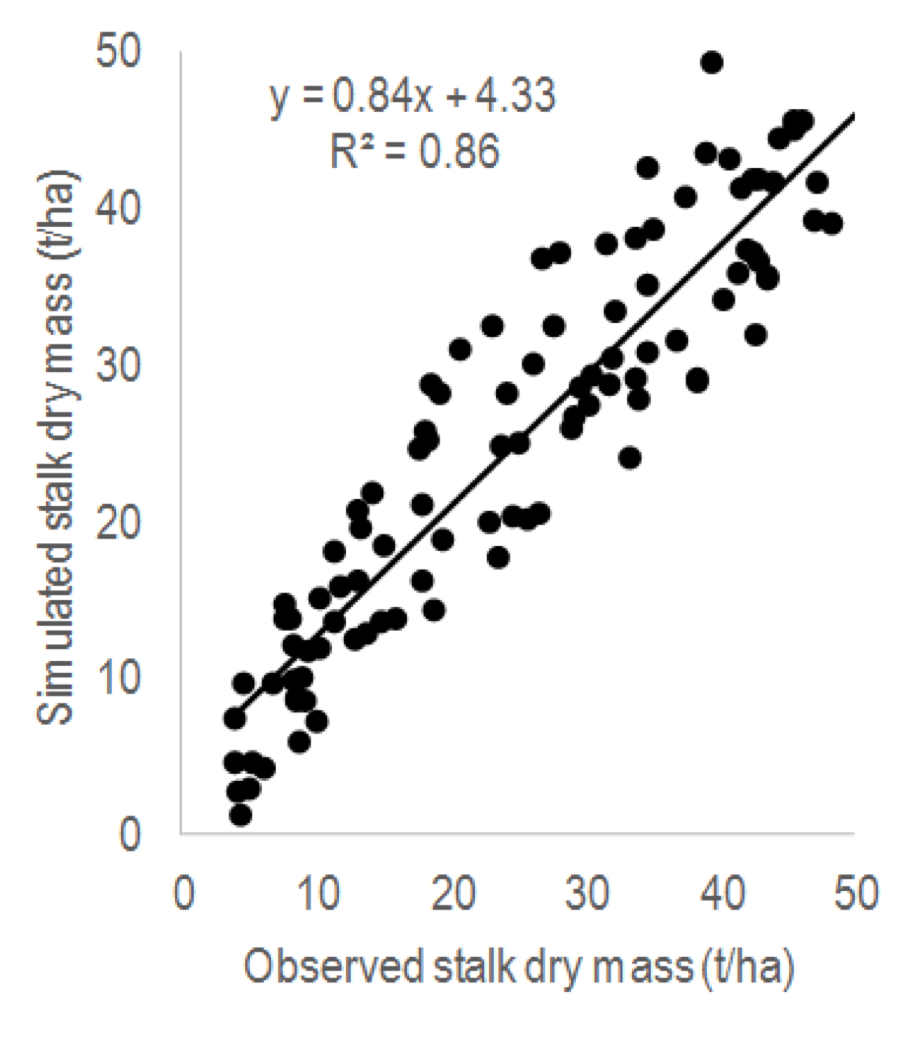Sugarcane
Main Contact for Initiative
Peter Thorburn
Activity
Five sugarcane simulation models were included in the pilot study namely APSIM-Sugar, DSSAT-Canegro, DSSAT-Canegro 2D, Mosicas and QCane. Ten datasets were supplied by collaborators in Australia, Brazil, Ecuador, Reunion Island, South Africa, USA and Zimbabwe. Data were captured in MSExcel files with a common template, and distributed to the different modelling groups.
A workshop was held in August 2014 in Mount Edgecombe, South Africa, to assess progress of model calibrations. Yield predictions generally showed minimal improvements from the Stage 1 “Blind” validation to the Stage 2 ‘Phenology’ calibration. Actions were planned to address issues identified and to proceed to Stage 3 calibration (in which biomass observations would be provided).
A special session of the South African Sugarcane Technologists’ Association Congress held in August 2014 in Pietermaritzburg, South Africa, was dedicated to the topic of modelling climate change impacts in sugarcane (Proc. S. Afr. Sug. Tech. Ass.) Ten papers were delivered dealing with evaluation, refinement and application of sugarcane models (APSIM-Sugar, DSSAT-Canegro and Aquacrop). A panel discussion focussed on data collection protocols, model calibration and validation, confidence and uncertainty in model predictions, and uncertainty regarding the CO2fertilisation effect.
Three sugarcane models (APSIM-Sugar, DSSAT-Canegro and Mosicas) have also been compared in an independent collaborative project on genetic trait modelling, conducted by the ICSM (https://sasri.sasa.org.za/agronomy/icsm/igepworkshop2017.php). Outcomes will be relevant for future climate change studies.

Improved DSSAT-Canegrovalidation
Overview of Participants
- Thorburn, F. Marin, A. Singels, J. Biggs, M. Jones, , J-F. Martine, K. Morgan, F. Royce, S. Chinorumba, R. Viator, O. Nunez, D.L. Liu.
Current Research Focus
The formal AgMIP sugarcane pilot project was suspended in 2015 due to a lack of resources. However, the different modelling groups used the progress made under AgMIP to continue work on crop model evaluation, improvement and application (predicting impacts and exploring adaptation strategies) in their respective countries.
Recent Noteworthy Finding
- The DSSAT-Canegro model’s simulation of temperature responses, water relations, respiration and tillering was refined and the model has improved capability for simulating climate change impacts.
- DSSAT-Canegro simulations suggest that future climate change may impact positively on sugarcane productivity in most dryland production areas in South Africa. In addition, new areas are likely to become suitable for sugarcane production as temperatures increase, assuming adequate water status.
Papers
- Jones M. et al. 2014. Report on AgMIP-Sugarcane workshop and SASTA special session.
- Biggs, J.S., Thorburn, P.J., Crimp, S., Masters, B., Attard, S.J., 2013. Interactions between climate change and sugarcane management systems for improving water quality leaving farms in the Mackay Whitsunday region. Aust. Agric. Ecosyst. Environ. 180, 79–89.
- Marin, F.R., Jones, J.W., Singels, A., Royce, F., Assad, E.D., Pellegrino, G.Q. & Justino F. 2013. Climate change impacts on sugarcane attainable yield in Southern Brazil. Climatic Change 117: 227-239.
- Singels, A., Jones, M. Marin, F., Ruane, A.C. and Thorburn, P. 2014. Predicting climate change impacts on sugarcane production at sites in Australia, Brazil and South Africa using the Canegro model. Sugar Tech 16(4): 347-355 (also published in Sugar J. 115: 874-881)
- Marin, F.R, Thorburn, P.J., Nassif, d.S.P., Costa, L.G., 2015. Sugarcane model intercomparison: Structural differences and uncertainties under current and potential future climates. Environmental Modelling & Software 72: 372-386
- Jones, M.R., Singels, A. and Ruane, A. 2015. Simulated impacts of climate change on water use and yield of irrigated sugarcane in South Africa. Systems 139: 260–270
- Jones, M.R., and Singels, A. 2017. Refining the Canegro model for improved simulation of climate change impacts on sugarcane. J. Agron. Under review.
- Marin, Fábio R.; JONES, J. W. ; Boote, K,J, . 2017. A Stochastic Method for Crop Models: Including Uncertainty in a Sugarcane Model. Agronomy Journal 109: 483-495
